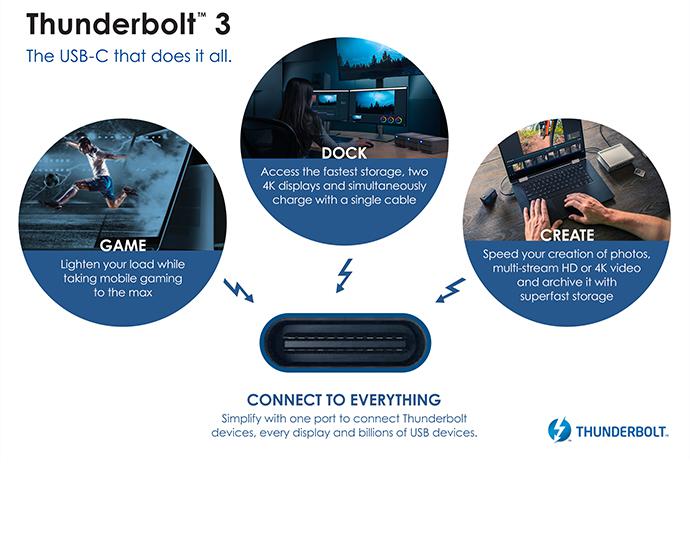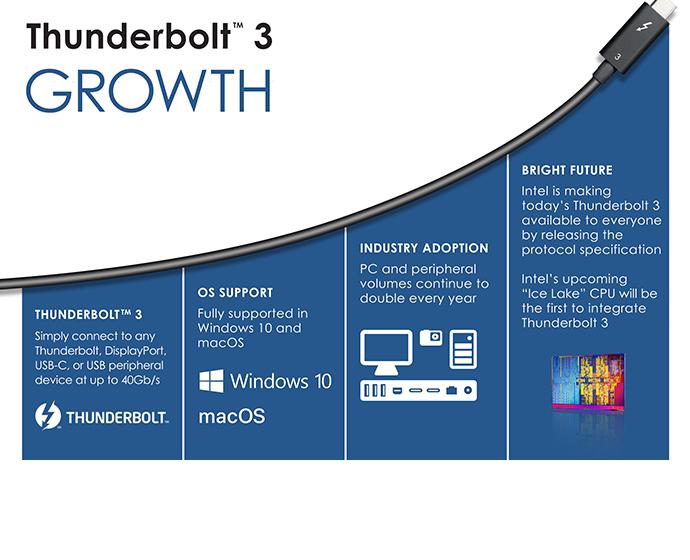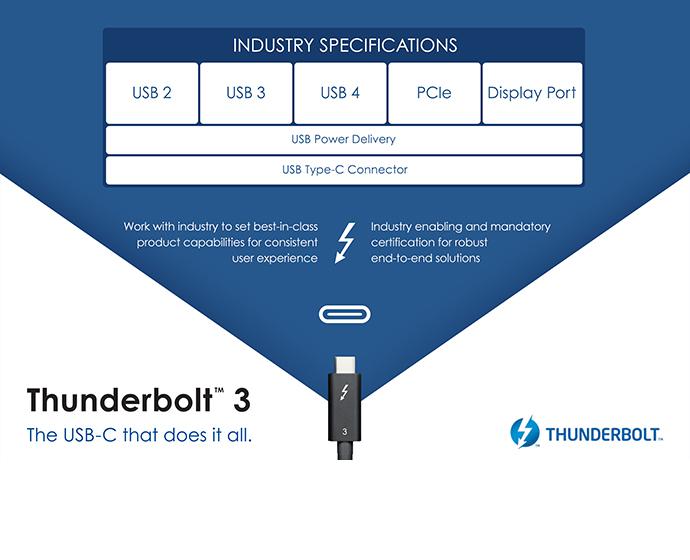Intel announced that it has contributed the Thunderbolt protocol specification to the USB Promoter Group. This will enable other chip makers to build Thunderbolt compatible silicon, royalty free. It will also increase compatibility among USB Type-C connector-based products, simplifying how people connect their devices.
As a result of the release, the USB Promoter Group has leveraged the Thunderbolt protocol specification as the underlying architecture for the upcoming USB4 specification. The convergence of the underlying Thunderbolt and USB protocols will increase compatibility among USB Type-C connector-based products, simplifying how people connect their devices.
-- Intel --
What’s New: Intel is well on its way to making the innovation delivered with Thunderbolt™ 3 available to everyone. Today, Intel announced that it contributed the Intel Thunderbolt protocol specification to the USB Promoter Group, enabling other chip makers to build Thunderbolt compatible silicon, royalty-free. In addition, the USB Promoter Group announced the pending release of the USB4 specification, based on the Thunderbolt protocol. The convergence of the underlying Thunderbolt and USB protocols will increase compatibility among USB Type-C connector-based products, simplifying how people connect their devices.
“Releasing the Thunderbolt protocol specification is a significant milestone for making today’s simplest and most versatile port available to everyone. This, in combination with the integration of Thunderbolt 3 into upcoming Intel processors is a win-win for the industry and consumers.”
–Jason Ziller, general manager, Client Connectivity Division at Intel
Why It Matters: Previously, Intel shared plans to integrate Thunderbolt 3 into future Intel CPUs and to release the Thunderbolt protocol specification to the industry. As detailed at CES 2019, Intel’s upcoming 10nm processor code-named “Ice Lake” will be the first to integrate Thunderbolt 3. Processor integration, combined with today’s announcement, is expected to drive large-scale, mainstream adoption of Thunderbolt.
Industry adoption of Thunderbolt 3 is accelerating. Thunderbolt 3 is fully supported in Windows 10*, macOS* and Linux*; volumes of PCs with these ports continue to double every year into the tens of millions; and all the latest Macs* have Thunderbolt 3 ports. More than 400 PC designs have been enabled with Thunderbolt 3. Peripheral device volumes also continue to double annually with more than 450 certified devices from a wide number of product categories, including docks, displays, storage and external graphics.
“Realizing HP’s vision for the office of the future requires seamless connectivity, powerful performance and total simplicity to enable people to unleash their creativity wherever their workday takes them,” said Bill Gorden, vice president, Commercial Notebook Management at HP. “Thunderbolt 3 is a powerful addition to our new notebooks and docks that delivers the flexibility sought by IT departments and the experiences people love.”
“Samsung Electronics is responding to increasing consumer demand for Thunderbolt 3 by offering sleek and powerful notebooks and other peripheral devices,” said Mincheol Lee, vice president, PC Strategic Marketing at Samsung Electronics. “We look forward to our ongoing collaboration with Intel to bring more innovative Thunderbolt 3 products to market.”




